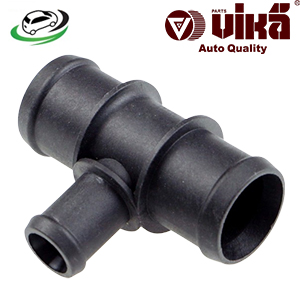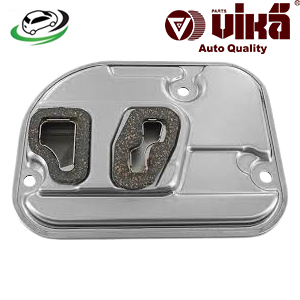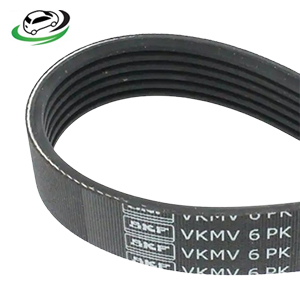Get V-Ribbed Belt (6PK1548) Audi A3 01-2007 / VW Golf 98-2007/Beetle 03-2005/Polo Classic 00-2002 036145933H
The V-ribbed belt, also known as a serpentine belt, is a critical component in the engine’s accessory drive system. It plays a vital role in powering various engine accessories and maintaining the vehicle’s overall functionality. This comprehensive overview will delve into the design, function, types, importance, common issues, maintenance, and replacement of V-ribbed belts.
Design and Function
The V-ribbed belt is characterized by its ribbed design, which distinguishes it from traditional V-belts. It features multiple ribs along its inner surface that fit into corresponding grooves on the pulleys, allowing it to handle high torque loads and provide efficient power transfer.
Design:
- Material Composition: V-ribbed belts are typically made from a combination of rubber, synthetic materials, and reinforced fibers. The rubber provides flexibility and resistance to wear, while the fibers reinforce the belt to handle high tension and load.
- Ribbed Structure: The belt’s ribbed design includes longitudinal ribs that engage with the grooves on the pulleys. This design maximizes grip and reduces slippage, ensuring efficient power transmission.
- Length and Width: V-ribbed belts come in various lengths and widths to fit different vehicle engines and accessory configurations. They are designed to handle specific load capacities and operational demands.
Functionality:
- Power Transmission: The primary function of the V-ribbed belt is to transmit power from the engine’s crankshaft to various accessories, such as the alternator, power steering pump, air conditioning compressor, and water pump. This power transmission is essential for the proper functioning of these accessories.
- Drive System Efficiency: By driving multiple accessories with a single belt, the V-ribbed belt simplifies the drive system and improves overall efficiency. It reduces the number of belts and pulleys needed, which can help lower vehicle weight and maintenance costs.
- Reducing Slippage: The ribbed design helps to reduce belt slippage, which can occur due to high torque or load. The ribs engage firmly with the pulleys, providing a reliable grip and ensuring consistent power delivery.
Importance of the V-Ribbed Belt
The V-ribbed belt plays a crucial role in the engine’s accessory drive system, making it essential for the proper operation of various vehicle components. Here’s why it’s important:
- Driving Accessories:
- Power Generation: The V-ribbed belt drives the alternator, which generates electrical power to recharge the battery and power the vehicle’s electrical systems. A malfunctioning belt can lead to a dead battery and electrical issues.
- Steering Control: The belt drives the power steering pump, which provides hydraulic assistance for easier steering. A failed belt can result in heavy or difficult steering, making driving challenging.
- Climate Control: The belt powers the air conditioning compressor, which cools the vehicle’s interior. Without a functioning belt, the air conditioning system will not operate, affecting passenger comfort.
- Maintaining Engine Performance:
- Consistent Power Delivery: The V-ribbed belt ensures that engine accessories receive consistent power, which is crucial for their proper operation and performance.
- Reducing Engine Load: By efficiently driving multiple accessories with a single belt, the V-ribbed belt helps reduce the overall load on the engine, which can improve fuel efficiency and reduce emissions.
- Preventing Component Damage:
- Avoiding Slippage: The ribbed design helps prevent slippage, which can cause excessive wear on both the belt and the pulleys. Consistent power transmission helps protect these components from premature failure.
- Reducing Noise: A properly functioning V-ribbed belt operates quietly, reducing noise from the accessory drive system. This contributes to a smoother and quieter driving experience.
Types of V-Ribbed Belts
V-ribbed belts come in various types and configurations to suit different engine designs and accessory requirements. Common types include:
- Standard V-Ribbed Belts:
- Design: Standard V-ribbed belts have a basic ribbed design with a fixed number of ribs. They are used in many conventional applications and are designed to handle standard power transmission requirements.
- Application: These belts are commonly found in vehicles with traditional accessory drive systems and are suitable for a wide range of engine sizes and configurations.
- High-Performance V-Ribbed Belts:
- Design: High-performance V-ribbed belts are engineered to handle higher loads and stress levels. They may feature additional reinforcement, specialized rubber compounds, or advanced rib designs to improve performance.
- Application: These belts are used in high-performance or heavy-duty vehicles, such as sports cars, trucks, and off-road vehicles, where enhanced durability and power transmission are required.
- Extended Life V-Ribbed Belts:
- Design: Extended life V-ribbed belts are designed for longer service intervals and improved durability. They often use advanced materials and construction techniques to extend their lifespan.
- Application: These belts are ideal for vehicles that require extended maintenance intervals or operate in harsh conditions, such as commercial vehicles or vehicles with high mileage.
Common Issues with V-Ribbed Belts
Despite their durability and efficiency, V-ribbed belts can experience various issues that may impact their performance and longevity. Common problems include:
- Wear and Tear:
- Causes: Over time, V-ribbed belts can experience wear and tear due to continuous use, exposure to heat, and friction with pulleys. This can lead to reduced grip and efficiency.
- Signs: Look for visible signs of wear, such as frayed or cracked ribs, glazed surfaces, or a worn appearance. Reduced accessory performance or squealing noises may also indicate belt wear.
- Slippage:
- Causes: Slippage can occur if the belt becomes loose, misaligned, or if the pulleys are worn. Slippage reduces the efficiency of power transmission and can lead to accessory malfunctions.
- Signs: Common signs of slippage include squealing or chirping noises, poor accessory performance, or visible wear on the belt or pulleys.
- Cracks and Fractures:
- Causes: Cracks or fractures can develop in the belt due to excessive heat, age, or physical damage. This can compromise the belt’s integrity and lead to failure.
- Signs: Inspect the belt for visible cracks, splits, or frayed edges. A cracked or fractured belt may exhibit signs of instability or noise during operation.
- Contamination:
- Causes: Contaminants such as oil, coolant, or dirt can damage the belt and reduce its effectiveness. Contamination can lead to premature wear and belt failure.
- Signs: Look for signs of contamination on the belt’s surface, such as oil stains or residue. Contaminated belts may show uneven wear or reduced performance.
Maintenance and Inspection
Regular maintenance and inspection of the V-ribbed belt are essential for ensuring its optimal performance and longevity. Here are some tips:
- Visual Inspections:
- Check for Wear: Regularly inspect the belt for signs of wear, such as frayed ribs, cracks, or glazing. Replace the belt if any significant wear is observed.
- Inspect Pulleys: Check the condition of the pulleys for signs of wear or misalignment. Worn or misaligned pulleys can affect belt performance and cause premature wear.
- Belt Tension:
- Check Tension: Ensure that the belt is properly tensioned. A loose or overly tight belt can cause slippage, wear, or damage. Many vehicles have automatic belt tensioners that maintain proper tension, but manual checks may still be necessary.
- Adjust Tension: If necessary, adjust the belt tension according to the manufacturer’s specifications. Proper tension ensures efficient power transmission and reduces wear.
- Contamination Prevention:
- Keep Clean: Avoid exposing the belt to contaminants such as oil, coolant, or dirt. Clean any spills or leaks promptly to prevent damage.
- Regular Maintenance: Perform regular maintenance on the cooling system and engine to prevent leaks and contamination that can affect the belt.
Replacing the V-Ribbed Belt
Replacing the V-ribbed belt is a relatively straightforward process, but it requires attention to detail to ensure proper installation and prevent future issues. Here’s a general guide:
- Preparation:
- Gather Tools and Parts: You’ll need a new V-ribbed belt, a belt tensioner tool (if required), and basic hand tools.
- Consult the Manual: Refer to the vehicle’s service manual for specific instructions and specifications for the belt replacement process.
- Remove the Old Belt:
- Release Tension: Use the belt tensioner tool to release the tension on the old belt. This may involve rotating the tensioner pulley to loosen the belt.
- Remove the Belt: Carefully remove the old belt from the pulleys, noting its routing for reference.
- Install the New Belt:
- Position the New Belt: Route the new belt according to the manufacturer’s specifications, ensuring that it fits properly into the pulley grooves.
- Apply Tension: Use the belt tensioner tool to apply the correct tension to the new belt. Ensure that the belt is properly aligned and seated on all pulleys.
- Final Checks:
- Inspect Installation: Check the belt for proper alignment and tension. Ensure that it is securely seated on all pulleys and that there are no signs of misalignment.
- Test Operation: Start the engine and observe the belt’s operation. Listen for any unusual noises or vibrations and check for proper accessory function.
Follow us on Facebook for more parts.



